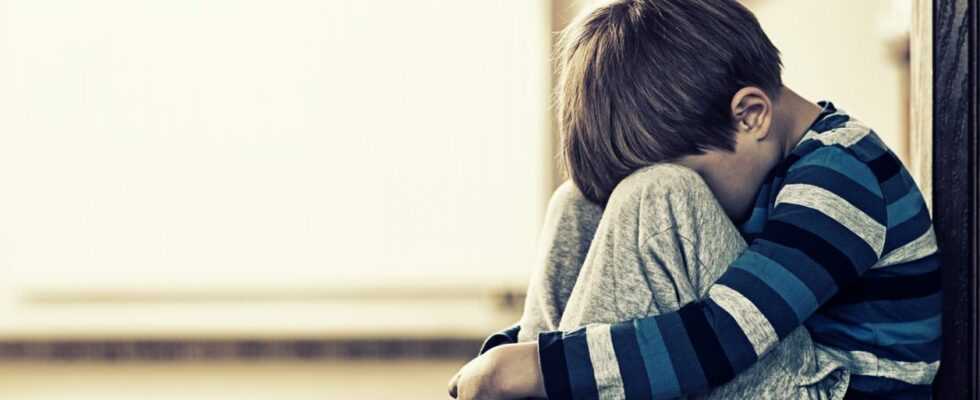Silverman’s syndrome, which is characterized by multiple untreated fractures in children, is difficult to diagnose, in particular because its symptoms are often hidden by the parents themselves.
After being described by French doctor Ambroise Tardieu in the 19th century on autopsy data, Silverman syndrome was named after a American pediatrician and radiologist in 1953. This little-known syndrome is characterized in children by radiological signs related to numerous untreated fractures dating from different ages. Also known as “battered child syndrome”, this syndrome reflects repeated abuse perpetrated by parents or adults with authority over the child victim. It can be physical violence, sexual abuse, neglect and/or psychological abuse.
The signals are difficult to identify for adults evolving in the child’s sphere, especially since the symptoms are often concealed by their tormentors. However, many children are victims of intra-family violence: in its 2020 progress report on preventing violence against children around the worldthe WHO (World Health Organization) revealed that almost 3 out of 4 children aged 2 to 4 regularly experience corporal punishment and/or emotional abuse from their parents and caregivers. The same year, Unicef France and the NousToutes collective published a forum to denounce this reality in France: every year, more than 50,000 children and adolescents are victims of abuseand 80% of violence against children takes place within the family.
Symptoms
Silverman syndrome is difficult to diagnose because it presupposes particular medical analyzes to identify it. According to our colleagues from Doctissimohospital statistics reveal that child abuse accounts for 0.5% of pediatric hospitalizations. This syndrome concerns young children but also infants who may be victims of the sequelae of shaken baby syndrome. Injuries can be caused by repeated violence, brutal handling but also abuse without blows : negligence concerning food or hygiene, sexual abuse, psychological violence.
The symptoms of these injuries are multiple:
- broken bones (often in the limbs, nose and ribs)
- cutaneous and subcutaneous hemorrhages (bruises and hematomas of different colors and unusual topography)
- genital damage
- traces of burns
- localized alopecia
- torn gums dear babies
- head trauma resulting in subdural hematomas
- spinal trauma
- a state of malnutrition
- papulo-erosive diaper rash
- a hypermobility spectrum disorder (HSD) which results in joint symptoms (dislocations, muscle damage, early osteoarthritis)
- chronic pain
- a disorder of proprioception (difficulty moving in a coordinated manner or positioning the limbs of one’s body correctly)
- failure to thrive
Diagnostic
But then how to identify these symptoms which require, according to their case, a more or less thorough medical examination, and make the diagnosis of Silverman syndrome? Because not only is the identification of these symptoms not easy, but “the admission of abuse is rarely obtained spontaneously by the perpetrator or the victim” explains Professor Zouine to the media Le Dauphiné.
These signals can be identified in everyday situations thanks to the vigilance of the adults present in the child’s entourage (for example, at school, daycare or during medical consultations). Explanations given by parents responsible for child abuse are often unclear or contradictoryand are among the indicators that should alert, as well as the repetition of the same accidents or injuries in the same child (recurrences after hospitalization are estimated at 60%). It is sometimes neighbours, nannies or friends of the family who give the alert to social services, which then initiate an investigation.
The strongest medical test for diagnosing Silverman syndrome is a bone scan : we inject a radioactive product which, by fixing on the skeleton, will make it possible to give a state of the bone metabolism on the entire body. The diagnosis of Silverman syndrome must be the subject of a legal report. Its early identification can be beneficial for the child victim, who otherwise risks being seriously marked by the violence suffered, both physiologically and psychologically : affective difficulties, anxiety, sleep disorders, aggressiveness, language delay, enuresis (uncontrolled urine emission), encopresis (emission of stools in inappropriate situations or places), eating disorders (anorexia/bulimia). . Long-term, the child victim is 16 times more likely to suffer physical or sexual violence from his intimate partner if it is a girl, and 14 times more likely to reproduce this violence if it is a boy, according to the WHO 2020 report.
What to do in a case of child abuse?
Faced with the great difficulty of identifying these child victims, he does not hesitate to give the alert in the event of suspicion of child abuse. However, this responsibility is far from being assumed in France: according to a November 2020 study by the Enfance et Partage association, 6 out of 10 French people wait to be absolutely sure, with supporting evidence, to contact the competent authorities. They are just as likely to not know how to report a case of violence against a child. In case of doubt, the majority of the population therefore takes the risk of letting a situation of violence continue.
If physical injuries are not always detectable from the outside, some psychological signals can help identify the behavior of an abused child :
- sadness
- apathetic state
- defensive reflex in the face of an attempted approach
- eating disorders
- systematic attachment to anyone coming into contact
- lack of interest in social interactions
- inability to react emotionally (laughing, crying)
If you suspect child abuse, don’t wait to sound the alarm: it’s better to be wrong than to miss it. There are several ways to file a report with child welfare services :
Once the judicial protection and the investigation have been launched, and if the violence is proven, the child can be placed under protection via the AEMO (Aide Éducative en Milieu Ouvert) or the various placement methods.
